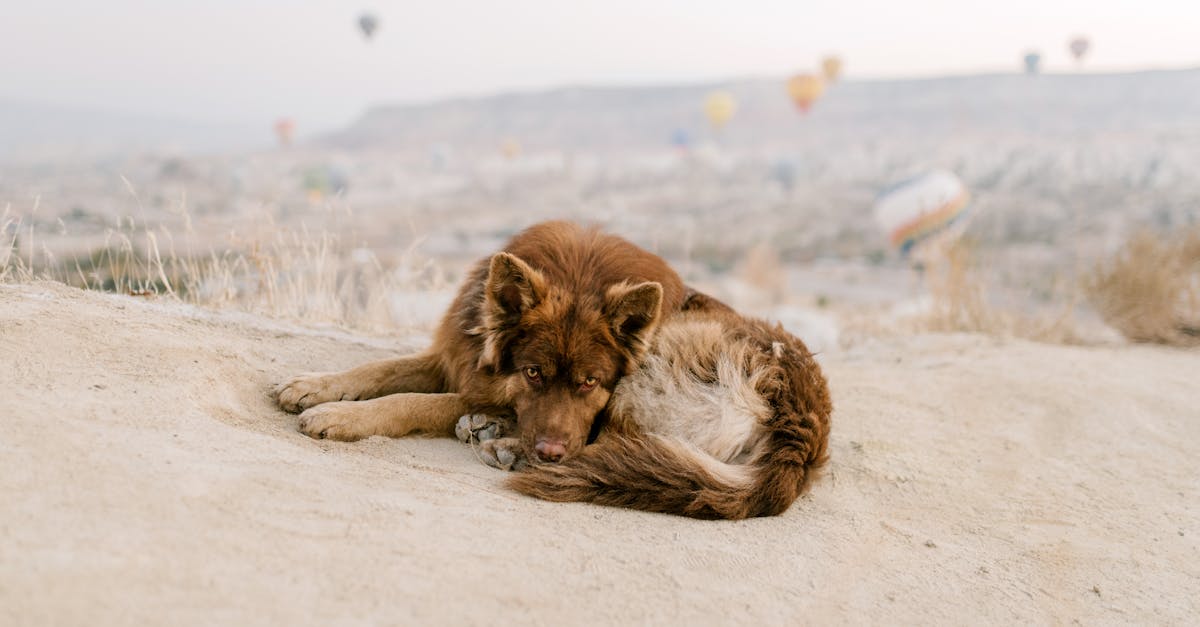Why Does My Dog Lay on Me: Understanding the Reasons and How to Respond
Understanding Canine Behavior: Why Does My Dog Lay on Me?
The Bonding Aspect
When your dog lays on you, it’s their way of strengthening the bond between you two. Dogs are pack animals, and physical contact is vital for them to feel connected to their pack members. By cuddling up with you, your dog is showing affection and reinforcing the bond they have with you. It’s a way for your pup to express their love and trust in you.
Seeking Comfort and Security
Dogs seek comfort and security from their owners, and laying on you provides them with a sense of safety and coziness. Your body warmth, scent, and presence give them reassurance and a feeling of protection. It’s like your dog’s way of saying, “I feel safe with you.” So, next time your furry friend curls up on your lap, know that they are seeking comfort and security in your presence.
Temperature Regulation
Another reason your dog may lay on you is for temperature regulation. Dogs regulate their body temperature through various means, and one of them is seeking warmth from their human companions. Your dog laying on you helps them stay warm, especially during colder weather or when they are feeling chilly. So, if your pup snuggles up to you, they might just be trying to stay cozy and comfortable.
Remember, when your dog lays on you, it’s their way of showing love, seeking comfort, and staying warm. Embrace these cuddle sessions as moments of bonding and affection between you and your furry friend.
Health Considerations When Your Dog Lays on You
The Importance of Recognizing Overattachment
If your dog constantly lays on you or becomes very anxious when not in physical contact, it could be a sign of overattachment. While affection is normal, excessive dependency might indicate separation anxiety or behavioral issues. It’s important to establish boundaries and encourage independence to ensure a healthy relationship with your pet.
Potential Health Issues to Watch Out For
When your dog lays on you, it can lead to potential health concerns for both you and your furry friend. Large dogs or those with weight issues might inadvertently cause physical discomfort or restrict your movement, affecting your posture. Moreover, certain health conditions like arthritis or joint pain could be aggravated if your dog’s weight puts pressure on specific areas of your body. Regular vet check-ups and monitoring your pet’s behavior can help address any emerging health issues promptly.
Interpreting Your Dog’s Body Language
Contentment Signs
When your dog lays on you, it can be a sign of contentment. They feel safe, loved, and at peace in your presence. Your dog may snuggle up to you, wag its tail gently, or have a relaxed body posture. These are all indications that your furry friend is happy and comfortable being close to you.
Anxiety Signals
On the flip side, if your dog seems restless, panting excessively, or showing signs of tension while laying on you, it could be a signal of anxiety. Watch out for behaviors like trembling, pinned back ears, or avoiding eye contact. These could suggest that your dog is feeling stressed or uneasy, seeking reassurance from you.
Remember, understanding your dog’s body language is crucial in decoding their emotions and needs. By paying attention to their signals, you can better nurture a strong and healthy bond with your loyal companion.
How to Respond to Your Dog’s Behavior
Establishing Boundaries
When your dog lays on you, it’s essential to establish boundaries to ensure a healthy relationship. While it’s lovely to receive affection from your furry friend, giving them their space is crucial. Encourage independence by providing a comfy bed or blanket nearby where they can relax without being on top of you. This helps them feel secure while respecting your personal space.
Positive Reinforcement Techniques
Using positive reinforcement techniques is key to shaping your dog’s behavior when they lay on you. Reward calm and respectful behavior with treats, praise, or playtime. If your dog tends to lay on you excessively, gently redirect them to their own space and reward them for choosing that option. Consistency is key in reinforcing this behavior, and over time, your dog will learn where they should lay to ensure a balanced and happy bond between you both.
Conclusion
Understanding why your dog lays on you goes beyond simple affection. It’s a way for them to connect, seek comfort, and regulate their body temperature. By recognizing signs of contentment versus anxiety in their body language, you can better understand their needs and emotions. Setting boundaries, encouraging independence, and using positive reinforcement techniques can help shape their behavior positively. Remember, it’s all about fostering a healthy and balanced bond with your furry friend. Keep an eye on their well-being, address any health concerns promptly, and enjoy the special connection you share.
Frequently Asked Questions
Why do dogs like to lay on their owners?
Dogs lay on their owners as a way to strengthen bonds, seek comfort, regulate body temperature, and show love and affection.
What are potential health considerations when a dog lays on you?
It’s important to recognize overattachment and set boundaries to prevent separation anxiety when a dog lays on you.
How can you interpret a dog’s body language when they lay on you?
Signs of contentment like snuggling, gentle tail wagging, and a relaxed body posture indicate happiness and comfort, while restlessness, excessive panting, or tension may suggest anxiety or stress.
How should you respond to your dog laying on you?
Establish boundaries, encourage independence, and use positive reinforcement techniques to shape your dog’s behavior positively when they lay on you.
What are key strategies for fostering a balanced bond with your dog?
Rewarding calm and respectful behavior, redirecting excessive laying, and promoting consistency are key strategies for a balanced and happy bond with your dog.

